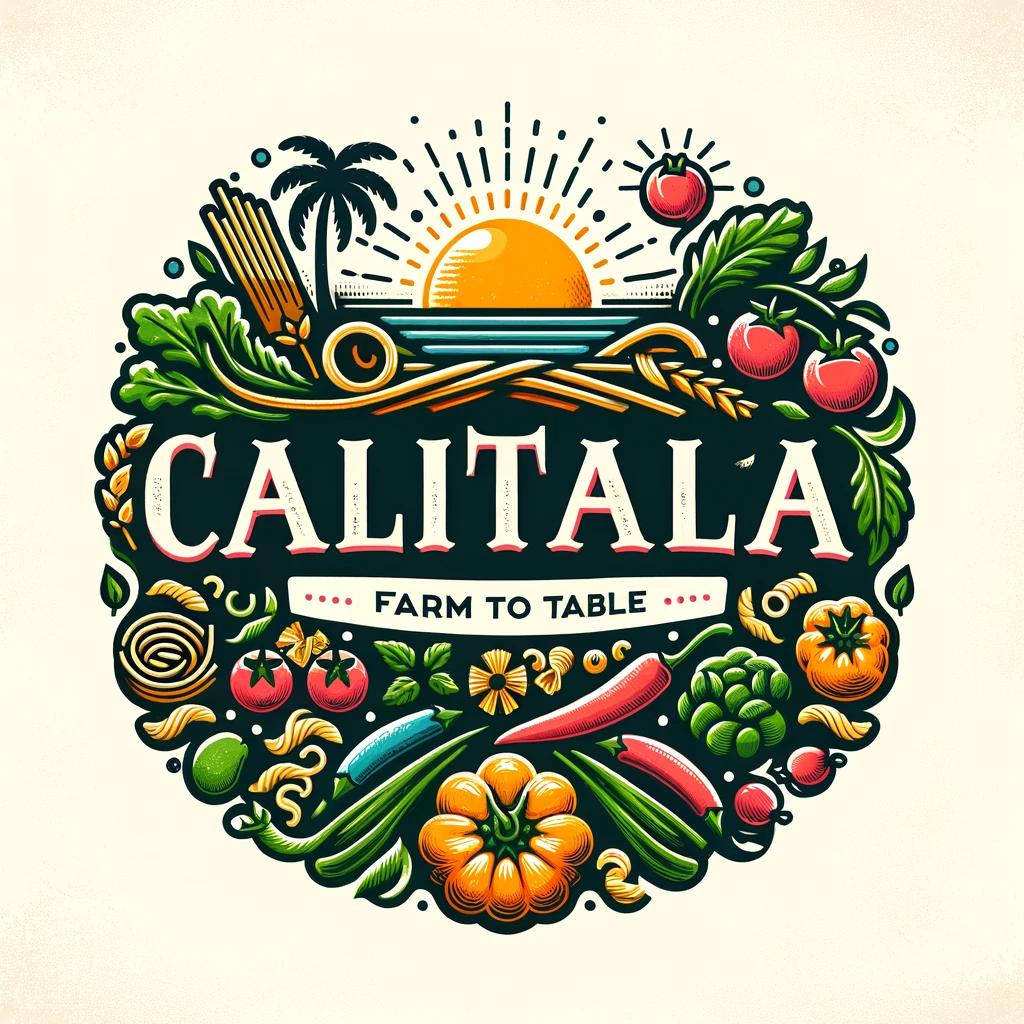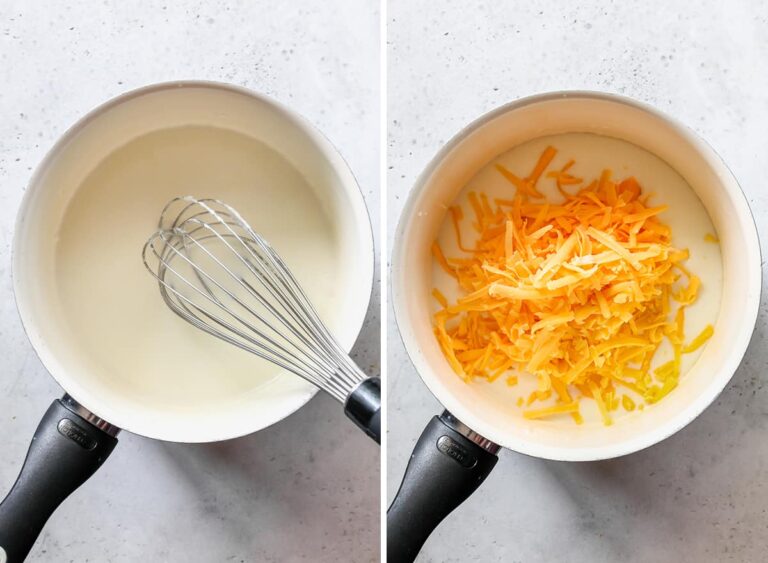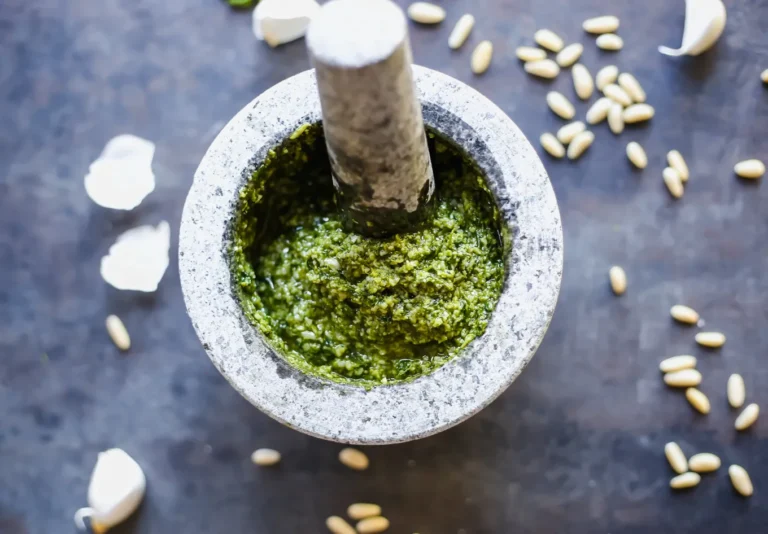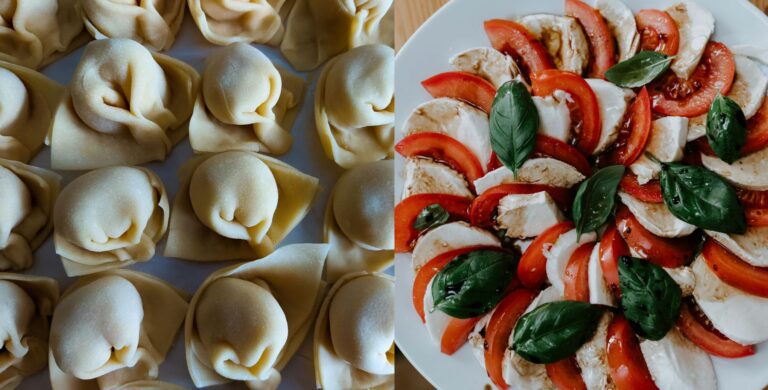Traditional basil pesto is a versatile and beloved Italian sauce that brings a burst of fresh flavor to a variety of dishes. This article will guide you through the process of how to make traditional basil pesto, from selecting the right ingredients to using both traditional and modern methods. You’ll also find tips to ensure your pesto is vibrant and delicious, along with serving suggestions to enhance your culinary creations.
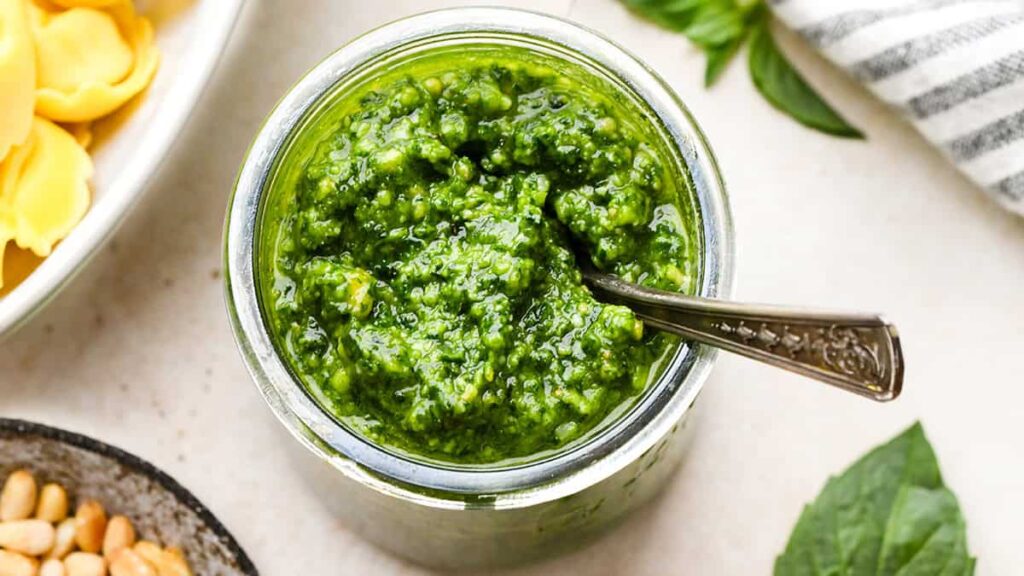
Ingredients Needed
To make traditional basil pesto, you’ll need the following ingredients:
- Fresh basil leaves
- Pine nuts
- Garlic cloves
- Parmesan cheese (Parmigiano-Reggiano)
- Extra virgin olive oil
- Salt
- Black pepper (optional)
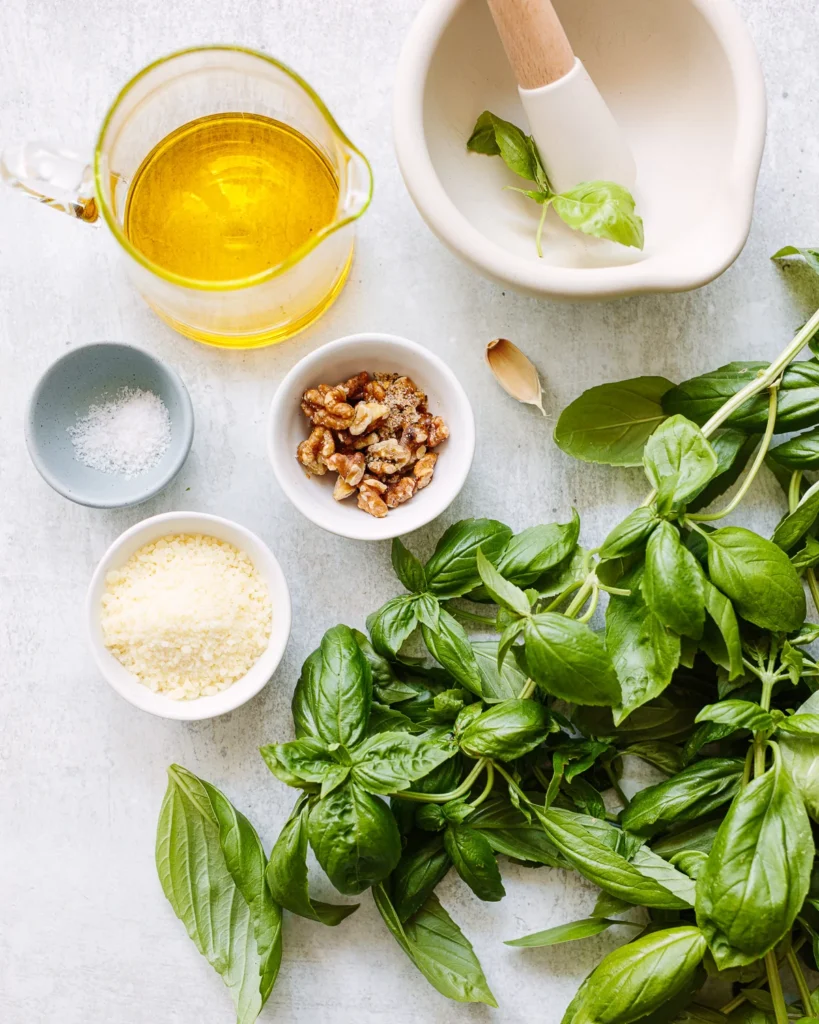
Ingredient Preparation
- Choosing Fresh Basil The quality of basil is crucial for a flavorful pesto. Look for bright green leaves without dark spots or wilting. Genovese basil, known for its sweet and peppery flavor, is the preferred variety for traditional pesto.
- Preparing Pine Nuts Pine nuts should be lightly toasted to enhance their nutty flavor. Spread them in a single layer on a baking sheet and toast in a preheated oven at 350°F (175°C) for about 5-7 minutes, or until they are golden and fragrant. Be sure to watch them closely to avoid burning.
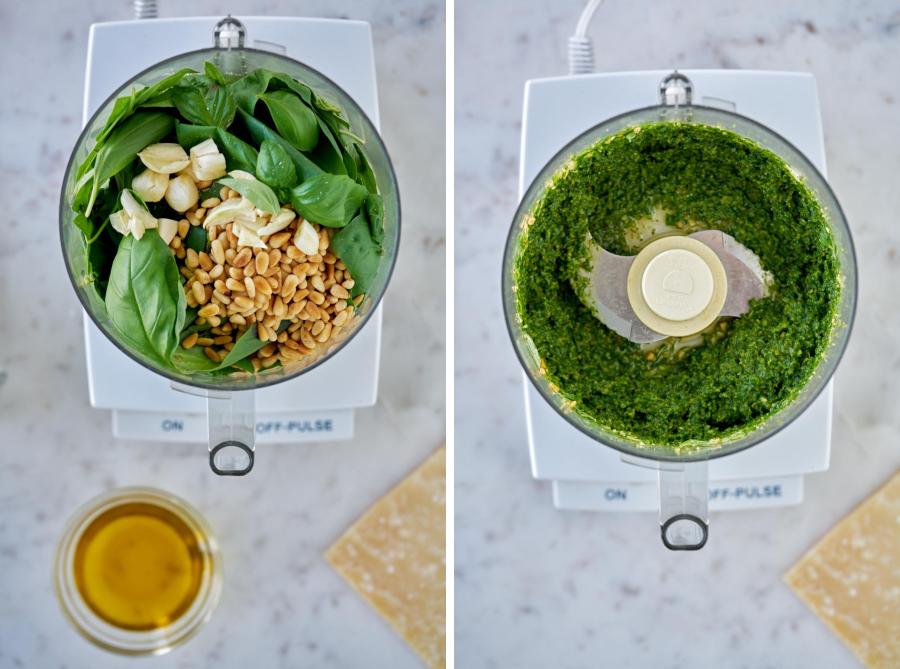
Step-by-Step Process
Traditional Methods
Mortar and Pestle Using a mortar and pestle is the traditional way to make basil pesto and yields a more textured and aromatic sauce. Here’s how to do it:

- 1. Basil and Garlic: Place the basil leaves and garlic cloves in the mortar. Use the pestle to crush and grind them into a paste.
- 2. Pine Nuts: Add the toasted pine nuts and continue grinding until the mixture is well combined.
- 3. Cheese and Oil: Gradually add grated Parmesan cheese while continuing to grind. Slowly drizzle in the olive oil, mixing until the pesto reaches a smooth consistency.
- 4. Seasoning: Add salt to taste and, if desired, a pinch of black pepper.
Modern Methods
Food Processor A food processor offers a quicker alternative while still producing excellent results. Follow these steps:

- 1. Initial Blend: Place the basil leaves, garlic cloves, and toasted pine nuts in the food processor. Pulse until finely chopped.
- 2. Cheese and Oil: Add the grated Parmesan cheese and pulse a few more times. With the processor running, slowly pour in the olive oil until the mixture is smooth and emulsified.
- 3. Seasoning: Taste and season with salt and pepper as needed.
Blender A blender can also be used for making pesto, although it may produce a smoother texture. Here’s how:
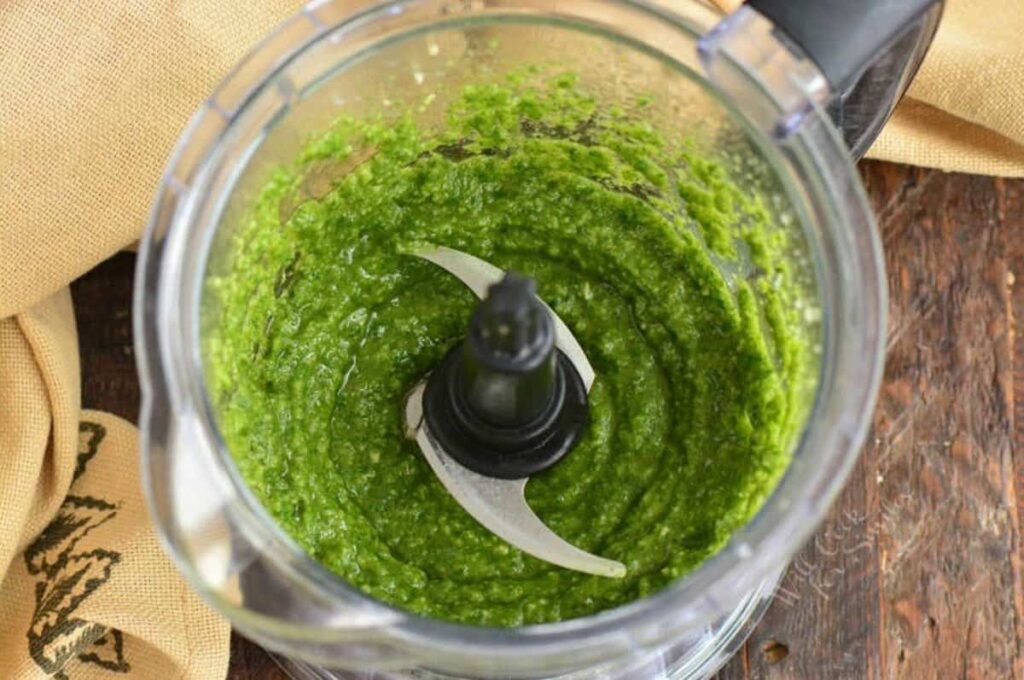
- 1. Basil and Garlic: Combine the basil leaves, garlic, and toasted pine nuts in the blender. Blend until a coarse mixture forms.
- 2. Cheese and Oil: Add the Parmesan cheese and blend again. Slowly add the olive oil while blending on low speed until smooth.
- 3. Seasoning: Adjust the seasoning with salt and pepper to your preference.
Tips for Perfect Pesto
- Maintaining Green Color To keep your pesto vibrant green, blanch the basil leaves briefly before blending. Plunge them into boiling water for 5-10 seconds, then immediately transfer to an ice bath to stop the cooking process. Pat the leaves dry before using.
- Balancing Salt The amount of salt can significantly affect the taste of your pesto. Start with a small amount and adjust gradually. Keep in mind that Parmesan cheese adds saltiness, so taste before adding more.
- Adjusting Garlic Garlic can be overpowering if not balanced correctly. Start with one or two cloves and add more if needed. If you prefer a milder garlic flavor, roast the garlic cloves before adding them to the pesto.
Serving Suggestions: Best Pairings
Pasta Types
Pesto pairs wonderfully with various pasta types. Here are some of the best options:

- Trofie: A traditional Ligurian pasta that holds pesto well.
- Fusilli: The spiral shape captures the pesto sauce perfectly.
- Spaghetti: A classic choice that allows the pesto to coat each strand.
- Penne: The ridges help the pesto cling to the pasta.
Bread Varieties
Pesto is also fantastic as a spread or dip for different bread varieties:
- Focaccia: The herbaceous flavor of pesto complements this Italian flatbread.
- Ciabatta: The airy texture soaks up the pesto beautifully.
- Sourdough: The tanginess of sourdough pairs well with the rich flavors of pesto.
- Baguette: Perfect for making bruschetta topped with pesto, tomatoes, and mozzarella.

Conclusion
Making traditional basil pesto is a delightful culinary experience that brings the fresh flavors of Italy to your kitchen. Whether you choose the traditional mortar and pestle method or a modern appliance, the result is a versatile sauce that can elevate numerous dishes. With the tips provided, you can ensure your pesto is vibrant, balanced, and utterly delicious. Enjoy experimenting with different pairings and savor the taste of homemade basil pesto.
Disclosure: Our blog contains affiliate links to products. We may receive a commission for purchases made through these links. However, this does not impact our reviews and comparisons. We try our best to keep things fair and balanced, in order to help you make the best choice for you.
